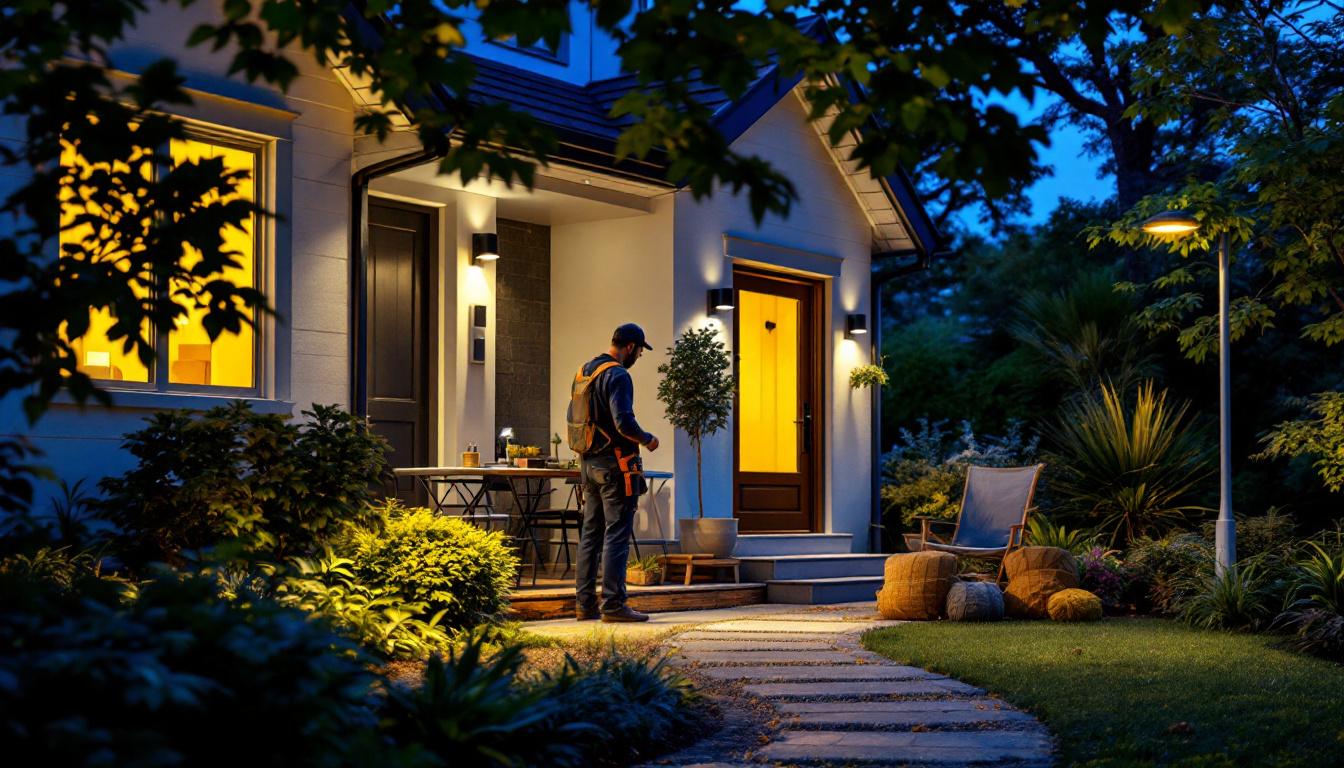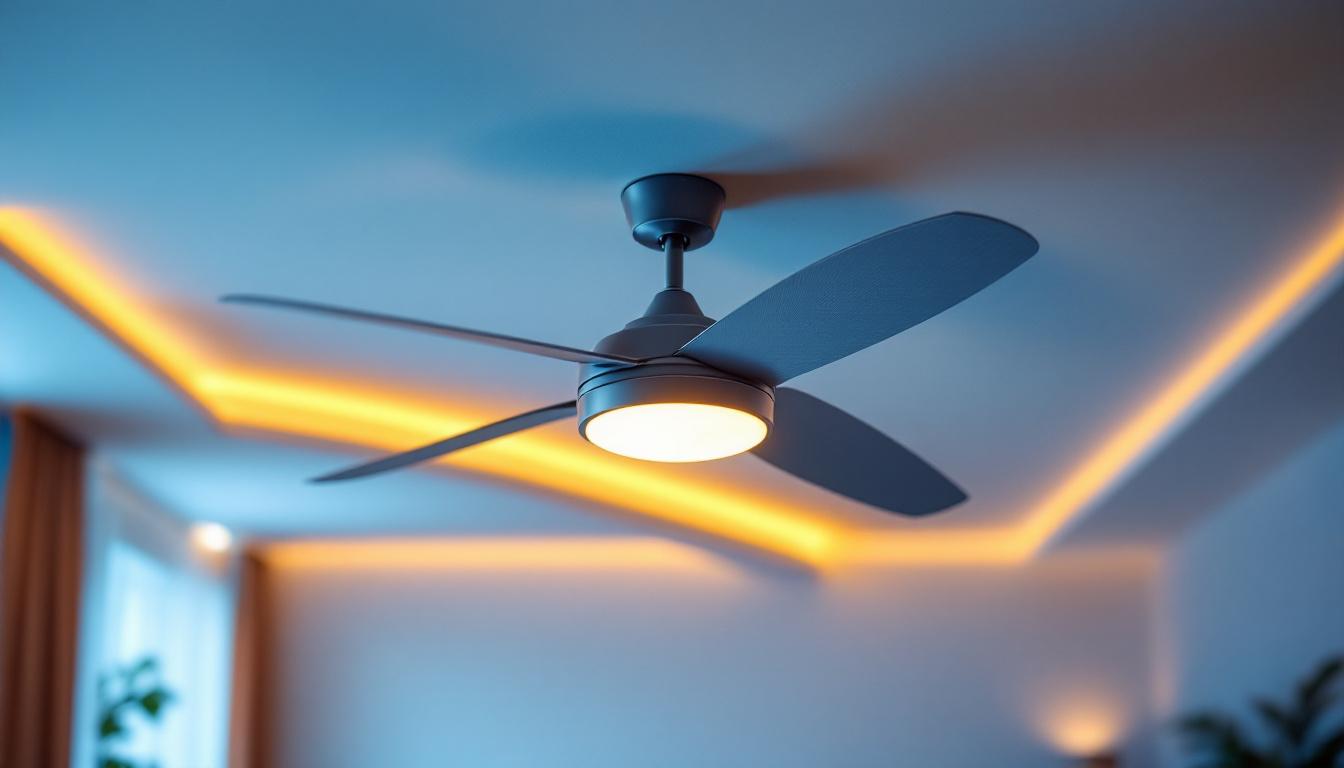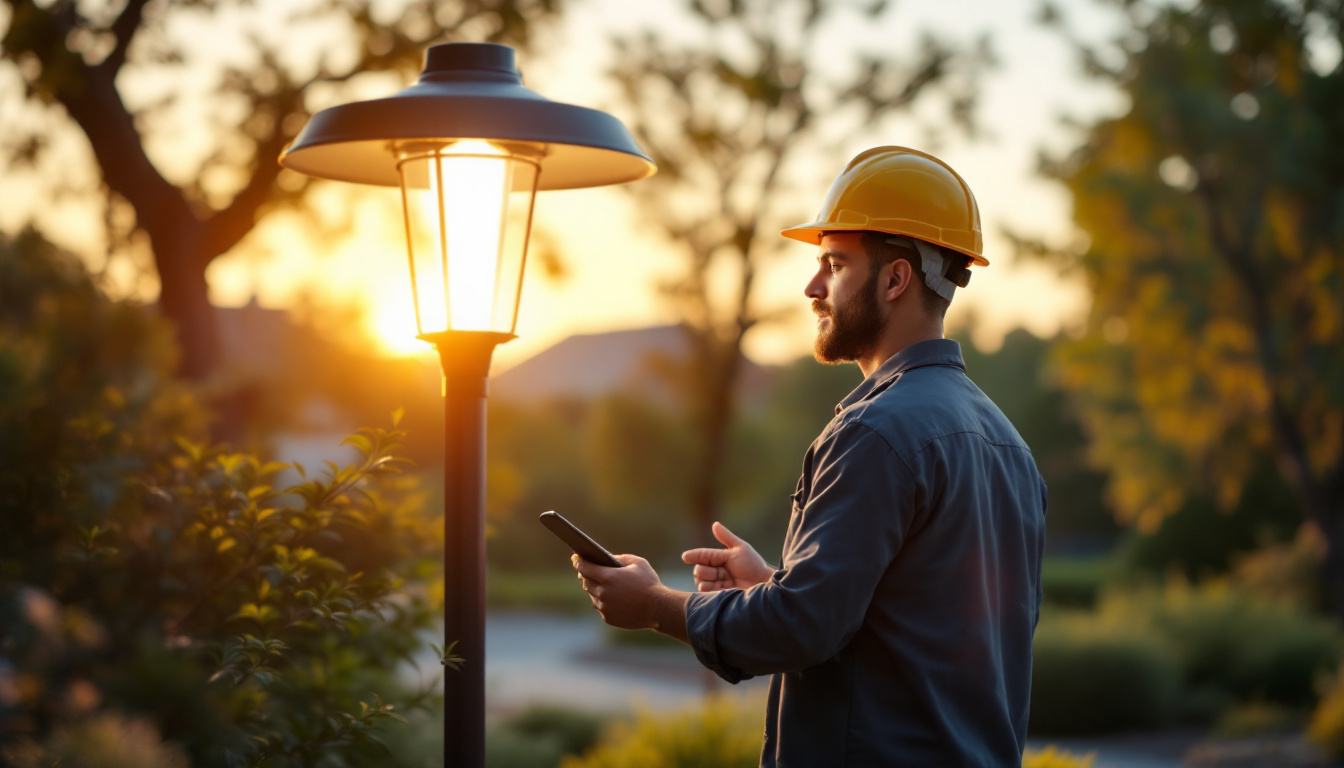
Light sensors are essential components in modern outdoor lighting systems. They enable automatic adjustments based on ambient light levels, ensuring that outdoor spaces are well-lit when needed and conserving energy when they are not. For lighting contractors, understanding the functionality and benefits of light sensors can significantly enhance their service offerings.
These sensors can detect variations in light intensity and trigger lighting systems accordingly. Whether for residential gardens, commercial properties, or public spaces, the integration of light sensors can lead to smarter, more efficient lighting solutions that appeal to environmentally conscious clients. In addition to their practical applications, light sensors also contribute to the aesthetic value of outdoor spaces, allowing for dynamic lighting designs that can change with the time of day or season, creating a more inviting atmosphere.
There are several types of light sensors available, each with its unique features and applications. The most common types include photoresistors, phototransistors, and digital light sensors. Understanding the differences among these types is crucial for selecting the right sensor for a specific project.
Photoresistors, also known as LDRs (light-dependent resistors), are simple and cost-effective. They change resistance based on light exposure, making them suitable for basic applications. Phototransistors offer faster response times and greater sensitivity, making them ideal for more complex systems. Digital light sensors, on the other hand, provide precise measurements and can be integrated into smart lighting systems for advanced functionalities. These digital sensors can also be programmed to respond to specific light levels, allowing for tailored lighting solutions that can adapt to varying environmental conditions, such as weather changes or seasonal daylight variations.
Incorporating light sensors into outdoor lighting systems brings numerous advantages. First and foremost, they enhance energy efficiency. By automatically turning lights on and off based on ambient light levels, these sensors reduce unnecessary energy consumption, leading to lower utility bills for clients.
Moreover, light sensors contribute to improved safety and security. Well-lit outdoor areas deter potential intruders and create a welcoming environment for residents and visitors. Additionally, the convenience of automated lighting systems means that clients no longer have to remember to switch lights on or off, adding to the overall user experience. Beyond these practical benefits, the implementation of light sensors can also align with sustainability goals, as they promote the use of renewable energy sources when paired with solar-powered lighting systems. This not only reduces the carbon footprint of a property but also positions clients as responsible stewards of the environment, appealing to a growing demographic that values eco-friendly practices in their home and business choices.
Installing light sensors requires careful planning and execution. Proper placement and configuration are essential to ensure optimal performance. Lighting contractors should consider the following tips to achieve the best results.
The location of the light sensor plays a critical role in its effectiveness. Ideally, the sensor should be placed where it can receive direct sunlight during the day and be shielded from artificial light sources at night. This positioning helps the sensor accurately gauge ambient light levels.
Contractors should also avoid placing sensors near reflective surfaces, such as windows or water features, as these can interfere with light readings. Instead, selecting a location that provides a clear view of the surrounding environment will enhance the sensor’s reliability.
Proper wiring is crucial for the successful installation of light sensors. Contractors should ensure that all connections are secure and weatherproof to prevent damage from the elements. Using high-quality cables and connectors will contribute to the longevity and reliability of the system.
Additionally, understanding the compatibility of the light sensor with existing lighting fixtures is vital. Some sensors may require specific voltage levels or communication protocols, so contractors should verify these details before installation to avoid complications.
As the demand for smart home technologies continues to rise, integrating light sensors with smart systems offers significant advantages for lighting contractors. This integration allows for enhanced control and customization of outdoor lighting.
Smart lighting systems enable users to control their outdoor lighting remotely through smartphones or other devices. By integrating light sensors with these systems, contractors can provide clients with the ability to adjust lighting schedules, brightness levels, and even color temperatures based on personal preferences.
Moreover, smart systems can be programmed to respond to specific conditions, such as turning on lights when motion is detected or adjusting brightness based on the time of day. This level of customization enhances user experience and adds value to the service provided by contractors.
Integrating light sensors with smart technology also allows for data collection and analysis. By monitoring usage patterns, contractors can offer clients insights into their lighting habits, helping them make informed decisions about energy consumption and lighting design.
This data-driven approach can lead to more efficient lighting solutions and can be a selling point for contractors looking to differentiate themselves in a competitive market. Clients appreciate the ability to understand their energy usage and make adjustments that align with their sustainability goals.
Regular maintenance of light sensors is essential to ensure their longevity and effectiveness. Lighting contractors should educate clients on the importance of keeping sensors clean and free from obstructions.
Dust, dirt, and debris can accumulate on light sensors, impairing their functionality. Contractors should recommend routine checks to ensure that sensors are clean and unobstructed. A simple wipe with a soft cloth can often restore optimal performance.
Additionally, contractors should advise clients to check for any changes in the surrounding environment that may affect the sensor’s performance, such as new landscaping or construction. Keeping clients informed about these factors can help prevent issues before they arise.
Despite proper installation and maintenance, issues may occasionally arise with light sensors. Common problems include lights not turning on or off as expected. In such cases, contractors should guide clients through basic troubleshooting steps, such as checking the sensor’s settings and ensuring that it is receiving adequate light.
If issues persist, it may be necessary to inspect the wiring and connections for any signs of damage or wear. Encouraging clients to reach out for professional assistance when needed can help maintain the integrity of the lighting system.
Examining successful implementations of light sensors in outdoor lighting projects can provide valuable insights for lighting contractors. These case studies highlight innovative solutions and demonstrate the benefits of integrating light sensors into various environments.
In a recent residential project, a lighting contractor implemented a smart lighting system featuring light sensors in a client’s garden. The sensors were strategically placed to ensure optimal performance, allowing the lights to automatically adjust based on the changing light levels throughout the day.
As a result, the homeowner enjoyed a beautifully illuminated garden during the evening hours while significantly reducing energy costs. The integration of smart technology also allowed for remote control of the lighting system, enhancing the overall user experience.
Another successful case involved a commercial property that required enhanced security lighting. The contractor installed light sensors that activated the outdoor lights when motion was detected, providing a deterrent against potential intruders.
This implementation not only improved the safety of the property but also reduced energy consumption by ensuring that lights were only on when necessary. The business owner reported increased peace of mind and satisfaction with the lighting solution provided.
The field of light sensor technology is continually evolving, and staying informed about future trends is essential for lighting contractors. Emerging technologies are set to enhance the capabilities of light sensors, making them even more valuable in outdoor lighting applications.
Recent advancements in sensor technology are paving the way for more sophisticated light sensors. Innovations such as machine learning algorithms and artificial intelligence are being integrated into light sensors, allowing for improved adaptability and responsiveness to environmental changes.
These advancements will enable sensors to learn from usage patterns and adjust lighting accordingly, providing an even more tailored experience for users. Contractors who stay abreast of these developments will be better positioned to offer cutting-edge solutions to their clients.
The Internet of Things (IoT) is transforming the way lighting systems operate. Light sensors that can communicate with other IoT devices will enable seamless integration and automation of outdoor lighting systems.
This connectivity will allow for enhanced control and monitoring, enabling users to create customized lighting scenarios based on their preferences and lifestyle. Contractors who embrace IoT technology will be at the forefront of the smart lighting revolution.
Light sensors are a vital component of modern outdoor lighting systems, offering numerous benefits such as energy efficiency, enhanced safety, and improved user experience. For lighting contractors, understanding the intricacies of light sensor technology and its applications can lead to more successful projects and satisfied clients.
By staying informed about installation best practices, maintenance tips, and emerging trends, contractors can position themselves as experts in the field. The integration of smart technology and data-driven solutions will further elevate the value of outdoor lighting systems, making them more appealing to a growing market of environmentally conscious consumers.
As the lighting industry continues to evolve, embracing innovation and adapting to new technologies will be key to success for lighting contractors. By leveraging the power of light sensors, contractors can create smarter, more efficient outdoor lighting solutions that meet the needs of their clients while contributing to a sustainable future.
Ready to elevate your outdoor lighting projects with the latest in light sensor technology? Look no further than LumenWholesale for all your lighting needs. Our extensive selection of high-quality, spec-grade lighting products is available at unbeatable wholesale prices, ensuring you get the best value for your investment. Say goodbye to local distributor markups and hello to superior lighting products with free shipping on bulk orders. Don’t compromise on quality or affordability. Make your next project a shining example of efficiency and innovation with LumenWholesale. Wholesale Lighting at the Best Value.

Discover essential insights for lighting contractors on selecting the perfect LED A19 bulbs.

Discover the top strategies lighting contractors use when installing extra large ceiling fans with integrated lights.

Discover the key factors that distinguish leading lighting contractors in the world of tanning bed bulbs.

Discover the essential compliance guidelines for outdoor LED lamps that every lighting contractor must know.